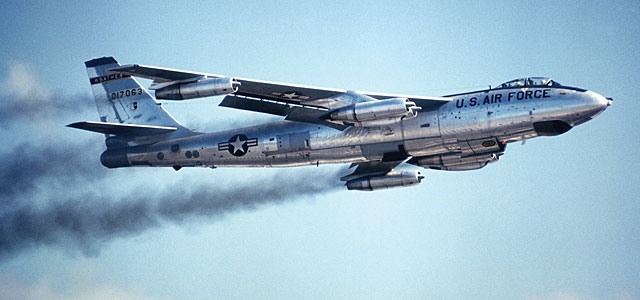By sheer coincidence, I am, at 86, one of relatively few ex-SAC members who can recall both how it was in the Strategic Air Command before General Curtis LeMay’s influence, and afterwards. It was a unique time in my life. In those days, the Strategic Air Command was a cocked fist carrying a knockout blow. The bellies of our fleet of 1,300 Boeing B-47s were filled with powerful nuclear weapons, and we knew our leaders had the guts to use them. The best thing was that we knew deploying the weapons was never going to be necessary because no nation dared to face the might of the United States Air Force.
When I say “we” I mean the men and women of the Strategic Air Command, then led by the greatest air combat leader of all time, General Curtis E. LeMay. It was LeMay who fashioned SAC into the perfect instrument of war.
LeMay had many irons in the fire, but two stand out. The first is the transition of the Strategic Air Command from a troubled, confused beginning to becoming the premier force in the world. The second was his mustering of support so that the American aviation industry could meet his demands.
When LeMay took over SAC in 1948, he commanded some 52,000 people, 21 bases, and 837 aircraft, including 35 each of the new Boeing B-50 and Consolidated B-36. Only seven years later, he commanded 196,000 people, 3,068 aircraft, and 51 bases, 14 of them in four overseas locations. More importantly, the aircraft LeMay possessed included 338 B-36s and 1,320 B-47s for bombing and reconnaissance, which were supported by 760 refueling aircraft, KC-97s and KB-29s. (The magnificent Boeing KC-135 would not arrive for another two years.)
Both sides perceived the threat the other represented to their national well-being, but the real threat to everyone—the entire world—came from the unprecedented and certifiably insane policies of the United States and the Soviet Union to build a vast, overwhelming number of nuclear weapons.
In some respects, the United States and its allies had no choice but to depend upon the nuclear weapon. There was no way they could match the massive Soviet Army, with its tens of thousands of tanks, with conventional weapons. It was estimated that a full-fledged Soviet attack in Europe could reach the English Channel in a matter of weeks, and then take Great Britain thereafter. Finland, Sweden and Norway would also have been overrun.
Thus began the race for nuclear armament by both sides. It reached an absurd peak when the U.S. stockpile reached 31,175 nuclear warheads in 1966, while the Soviets didn’t say “when” until 1986, with 55,000 similar weapons.
Fortunately, none of this madness was unleashed, for all the world’s living things might well have been destroyed.
To read the article from the October 2015 issue of Flight Journal. click here.
















